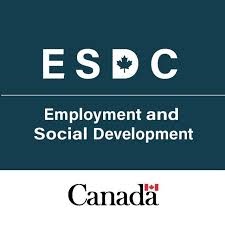
Closed
Enabling Accessibility Fund — Small projects
Last Update: October 27, 2025
ON, Canada
Funding to create more accessible, safe spaces
Grant and Funding
At a glance
Funding available
Financing goals
No objectives are currently available
Eligible Funding
- Maximum amount : 125,000 $
- Up to 25% of project cost
Timeline
- Open Date : May 28, 2024
- Closing date : July 23, 2024
Eligible candidates
Eligible Industries
- Construction
- Retail trade
- Transportation and warehousing
- Information and cultural industries
- Educational services
- Health care and social assistance
- Arts, entertainment and recreation
- Accommodation and food services
- Other services (except public administration)
- Public administration
Location
- Ontario
Legal structures
- Non-profit
- Public or Parapublic institution
- For-profit business
Annual revenue
- All revenue ranges
Organisation size
- 99 employees maximum
Audience
- Indigenous Peoples
- Persons with Disabilities
- Rural or Northern Residents
- Canadians
Non-profit candidates
Sector of operation
- Social Services
- Emergency and Relief
- Economic, Social and Community Development
- Housing
- Employment and Training
- Diversity and Inclusion
Target group
- Indigenous peoples
- People with disabilities
- Rural / Remote communities
- Low-income individuals / families
Revenue structure
- All structures
Scope
- Local
- Municipal
- Regional
- National
Overview
Get funding to cover eligible costs for small-scale construction, renovation or retrofit projects that will help people with disabilities live and work in more inclusive and accessible communities.
Activities funded
- Carrying out renovation, construction or redesign work aimed at improving accessibility and safety in a workplace or community space intended for people with disabilities.
- Acquisition and installation of accessible equipment or devices that facilitate access to services, community programs, or employment for people with disabilities.
- Implementation of information and communication technologies to provide improved access to services or programs accessible to multiple people with disabilities.
Examples of admissible projects:
$ 37,500
Installing FM loop system and audiovisual fire alarms in community hall
$ 30,000
Modify websites of local businesses for accessibility
$ 90,000
Upgrade playground to make it fully accessible at River Park
$ 52,500
Build a multi-sensory room at the Aurora Rehabilitation Center
$ 60,000
Install accessible washrooms and ramps in community center
Eligibility
- The applicant must be a not-for-profit organization, for-profit organization with a maximum of 99 employees, Indigenous organization, municipal or territorial government, provider of transitional or emergency shelter/housing, or an early learning and child care (ELCC) centre (including Indigenous and certain ELCC centres on public school property where activities are reserved exclusively for the centre).
- The project must focus on improving accessibility and/or safety for persons with disabilities in workplaces or community spaces through construction, renovation, retrofitting, acquisition of accessible equipment, or information and communication technologies that benefit multiple users.
- The project must be ready to begin by fall 2024 and be completed within two years.
- The organization must submit a complete application with all required supporting documentation before the deadline.
Who is eligible?
- Not-for-profit organizations
- For-profit organizations with a maximum of 99 employees
- Indigenous organizations
- Municipal governments
- Territorial governments
Who is not eligible
- Federal or provincial government entities
- Public elementary and secondary schools, except for licensed/registered child care centres located on school property where the project activity is exclusively for the centre
- Public health care institutions and public hospitals
- Home-based child care centres
- Crown corporations and entities owned by or located on federal or provincial government land
- Long-term care facilities not specifically serving persons with disabilities
- Residential housing organizations such as condominium and co-op boards, except for transitional housing or accessible common spaces for persons with disabilities
Eligible expenses
- Renovation, construction, and rearrangement work aimed at accessibility and safety.
- Purchase of accessible equipment or devices for persons with disabilities.
- Provision of information and communication technologies (ICT) and accessible systems, on the condition that they benefit multiple users and not just one person.
Eligible geographic areas
- Organizations located anywhere in Canada, including all provinces and territories.
- Special considerations for organizations in rural and remote regions, and Indigenous communities.
Selection criteria
- Clarity and relevance of the project description, including identification of existing barriers to accessibility and safety for persons with disabilities in the workplace or community.
- Explanation of community support for the project.
- Assessment of how the project will improve accessibility and safety for persons with disabilities and facilitate their participation in the workplace or community.
- Accuracy and justification of project costs, including reasonableness and sufficient detail, especially for non-fixed cost activities.
- Demonstrated capacity of the organization to successfully manage and deliver the proposed project.
How to apply
1
Verify eligibility and priorities
- Review eligibility criteria for applicants and projects
- Ensure your organization and project activities align with program requirements
- Check funding priorities such as target groups and community needs
2
Read application instructions
- Review all application guidelines and requirements
- Read instructions for the Enabling Accessibility Fund (Small Projects)
- Identify mandatory documents and project information needed
3
Attend information session (optional)
- Attend an information session if desired by emailing NC-HIP-PIP-EAF_ODI-GD@hrsdc-rhdcc.gc.ca
- Select a session date and preferred language (English/French)
- Request accommodations at least 10 business days before the session if needed
4
Prepare supporting documents
- Gather a recent (within 2 years) Canada Revenue Agency business number document
- Obtain one external quote for each non-fixed rate project activity
- Complete the EAF Small Projects calculator PDF summary
- Take digital photos/screenshots of site, equipment, or web improvements
5
Complete application form
- Describe project purpose and current accessibility or safety barriers
- Explain community support and impact
- Detail project scope, benefits for persons with disabilities, and budget
- Demonstrate your organization’s capacity to manage the project
6
Validate application completeness
- Review the application and all supporting materials for completeness
- Verify that all required documents are attached
- Ensure no fields are left blank
7
Submit application
- Submit the completed application and all supporting documents via the online portal before July 23, 2024, 3:00 pm EDT
- Retain a copy of the submitted materials for your records
8
Wait for funding decision
- Wait for Employment and Social Development Canada (ESDC) to review your application
- Monitor your email for updates regarding your application status
Additional information
- Applicants should submit only one application per unique CRA business number; if multiple applications are submitted, only the first will be considered.
- Virtual information sessions are available in both English and French during June and July 2024 for organizations interested in applying.
- If accommodations are needed to participate in an information session, requests must be sent at least 10 business days in advance.
- The application process operates on a first-come, first-served basis for funding decisions.
Contacts
NC-HIP-PIP-EAF_ODI-GD@hrsdc-rhdcc.gc.ca
ON, Canada
Apply to this program
Frequently Asked Questions about the Enabling Accessibility Fund — Small projects Program
Here are answers to the most common questions about the Enabling Accessibility Fund — Small projects. This section explains what the program is, how much funding is available, eligibility requirements, application deadlines, and other important details to help you determine if this grant is right for your business.
What is the Enabling Accessibility Fund — Small projects?
How much funding can be received?
What expenses are eligible under Enabling Accessibility Fund — Small projects?
What is the deadline to apply?
Is the Enabling Accessibility Fund — Small projects a grant, loan, or tax credit?
Who are the financial supporters of the Enabling Accessibility Fund — Small projects?
Who is eligible for the Enabling Accessibility Fund — Small projects program?
Who can I contact for more information about the Enabling Accessibility Fund — Small projects?
Where is the Enabling Accessibility Fund — Small projects available?
Are Indigenous Peoples eligible for the Enabling Accessibility Fund — Small projects program?
Apply to this program
More programs like this

Grant and FundingExpert AdviceOpen
First Nations Community Building Retrofit Program
Independent Electricity System Operator (IESO)Funding and support for on-reserve community energy-efficiency retrofits

Grant and FundingExpert AdviceOpen
Expanded Energy Management Program
Independent Electricity System Operator (IESO)Funding to strengthen facility energy management and efficiency initiatives

Grant and FundingOpen
XLerate Program
Independent Electricity System Operator (IESO)Pay-for-performance funding for large-scale Ontario energy-efficiency projects

Grant and FundingOpen
Court Challenges Program (CCP)
University of OttawaSupports legal actions advancing constitutional and language rights
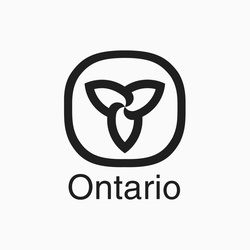
Grant and FundingClosed
Ontario Anti-Hate Security and Prevention Grant (2025-26)
Government of OntarioSupports Ontario organizations enhancing security against hate‑motivated incidents

Grant and FundingClosed
INVEST North Program — Investment — Grow Stream
Government of OntarioFinancial help to grow a business in Northern Ontario
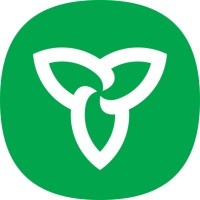
Grant and FundingClosed
Ontario 400th Celebrations Program
Ministry of Francophone AffairsFunding for cultural and tourism events celebrating Francophone heritage in Ontario
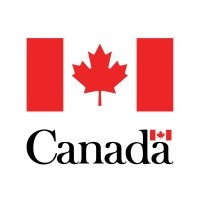
Grant and FundingOpen
Parliamentary District Policing Program
Public Safety Canada (PSC)Funds Ottawa Police Service for enhanced security in Parliamentary District
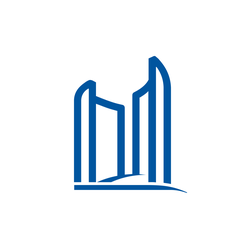
Grant and FundingOpen
Eco-Roof Incentive Program
City of TorontoSupports installation of green and cool roofs in Toronto

Closed
ISDE — Advanced technologies for open-source intelligence due diligence
Innovation, Science and Economic Development Canada (ISED)AI solutions for research security and open-source intelligence advancement
Sign up to our platform to access the Enabling Accessibility Fund — Small projects information sheet for free
Get access to 4,000+ programs, practical guides, personalized alerts, and an AI assistant to support your grant applications.